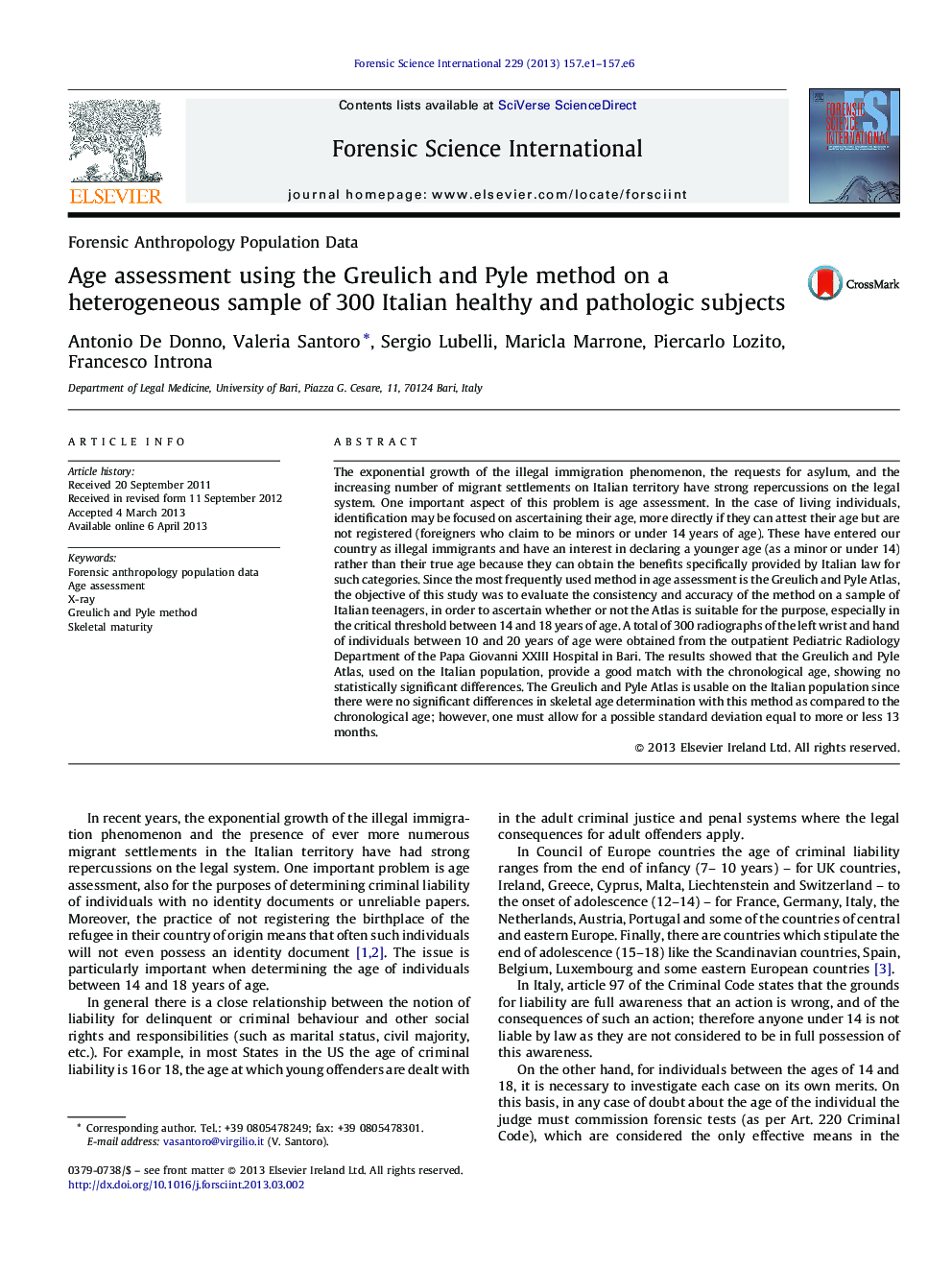| Article ID | Journal | Published Year | Pages | File Type |
|---|---|---|---|---|
| 95965 | Forensic Science International | 2013 | 6 Pages |
Abstract
The exponential growth of the illegal immigration phenomenon, the requests for asylum, and the increasing number of migrant settlements on Italian territory have strong repercussions on the legal system. One important aspect of this problem is age assessment. In the case of living individuals, identification may be focused on ascertaining their age, more directly if they can attest their age but are not registered (foreigners who claim to be minors or under 14 years of age). These have entered our country as illegal immigrants and have an interest in declaring a younger age (as a minor or under 14) rather than their true age because they can obtain the benefits specifically provided by Italian law for such categories. Since the most frequently used method in age assessment is the Greulich and Pyle Atlas, the objective of this study was to evaluate the consistency and accuracy of the method on a sample of Italian teenagers, in order to ascertain whether or not the Atlas is suitable for the purpose, especially in the critical threshold between 14 and 18 years of age. A total of 300 radiographs of the left wrist and hand of individuals between 10 and 20 years of age were obtained from the outpatient Pediatric Radiology Department of the Papa Giovanni XXIII Hospital in Bari. The results showed that the Greulich and Pyle Atlas, used on the Italian population, provide a good match with the chronological age, showing no statistically significant differences. The Greulich and Pyle Atlas is usable on the Italian population since there were no significant differences in skeletal age determination with this method as compared to the chronological age; however, one must allow for a possible standard deviation equal to more or less 13 months.
Related Topics
Physical Sciences and Engineering
Chemistry
Analytical Chemistry
Authors
Antonio De Donno, Valeria Santoro, Sergio Lubelli, Maricla Marrone, Piercarlo Lozito, Francesco Introna,
